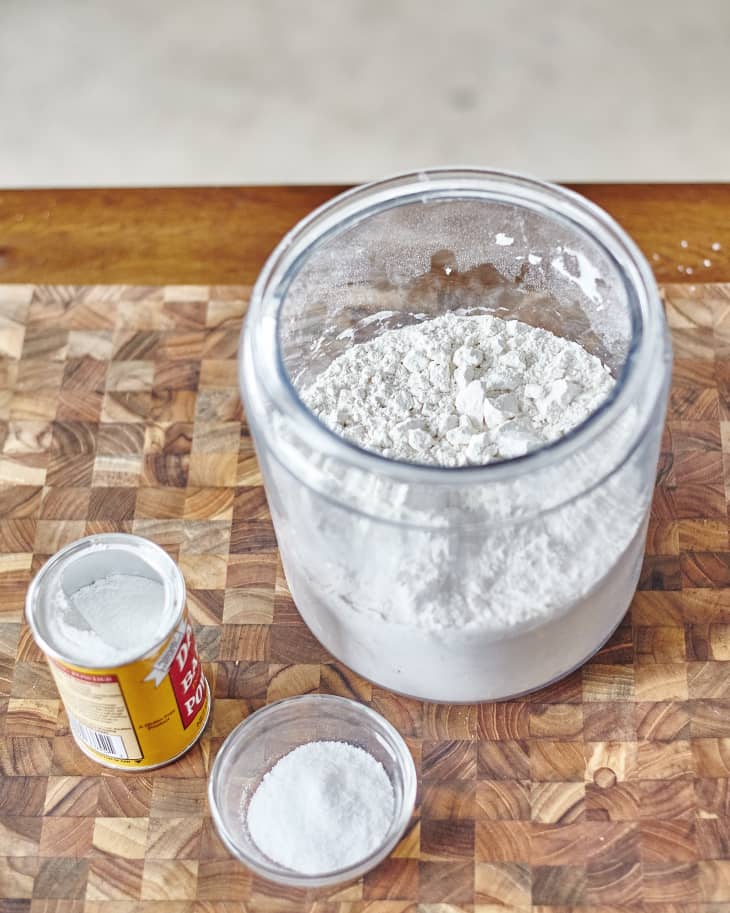How To Make Self-Rising Flour

Self-rising flour isn’t something I’ve always kept in the pantry. When I first started baking, I’d only occasionally stumble across a recipe for it and, without knowing what self-rising flour was, I’d skip over that recipe. A few years ago I started a personal quest to bake better biscuits, and that’s where I learned to love this flour blend. Now self-rising flour is a staple in my pantry and it should be in yours as well.
What Is Self-Rising Flour?
Self-rising flour is a combination of all-purpose flour, baking powder, and salt. Chances are high that you already have those staples in your pantry already too. The blend is typically comprised of 1 cup of all-purpose flour plus 1 1/2 teaspoons baking powder and 1/4 teaspoon fine salt.
The History of Self-Rising Flour
Self-rising flour was created in the mid-1800s by an English baker, Henry Jones, who hoped to sell it to the British navy so that they could make fresher baked goods available to sailors. He patented his invention in the United States in 1849, giving rise (pun intended) to modern dry mixes like Bisquik, Jiffy, and later boxed cake mix. It remains a popular staple in England and the southern United States.
When to Use Self-Rising Flour
Self-rising flour was created for baking quick breads, biscuits, and pancakes. You’ll occasionally see it called for in cake and cupcake recipes. Self-rising flour should not be used in yeast breads, nor should it be used in place of plain all-purpose flour.
Storing Self-Rising Flour
Self-rising flour has a slightly shorter shelf-life than regular flour because being exposed to the flour, salt, and air, the baking powder begins to lose its effectiveness. Mix up self-rising flour in smaller batches and store it in an airtight container in a cool, dark place. Whether I buy self-rising flour or make my own, I always label the jar with the date it was made or purchased, and plan to use it within a year.
Making Your Own Self-Rising Flour
Self-rising flour is available commercially, most supermarkets carry at least one brand, so picking up a small bag is ideal if you’re baking for one. I almost always take a small bag with us on vacation because self-rising flour can make quicker work of pancakes, biscuits, and cornbread since there are fewer ingredients to measure out. But let’s say you come across a recipe calling for this flour blend and you can’t get your hands on some. You can quickly make a batch of self-rising flour from other pantry essentials.
How To Make Self-Rising Flour
Makes 4 cups
Nutritional Info
Ingredients
- 4 cups
all-purpose flour
- 2 tablespoons
baking powder
- 1 teaspoon
fine salt
Equipment
Measuring cups and spoons
Large bowl
Whisk
Instructions
Measure ingredients: Measure the flour into a large mixing bowl.
Add the leavening: Add the baking powder and salt.
Combine: Whisk to combine.
Storage: Use or store in an airtight container.
Recipe Notes
Storage: Self-rising flour can be stored in an airtight container at room temperature for up to 1 year.
